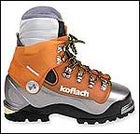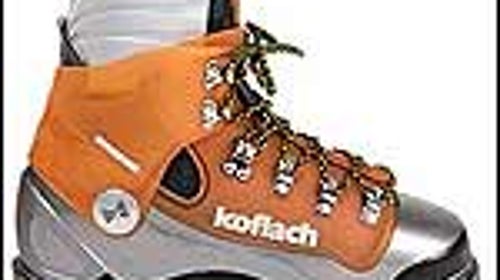It all depends on your future intentions. Boots, of course, are a fairly significant investment; good plastic boots run $250 and up. Meantime, you probably can rent them for around $25. And “break-in” isn’t really an issue. Plastic boots don’t break in, so rental boots will fit—or not—right from the get-go (rule of thumb: rent them a half-size or more larger than your normal shoe size). So, if your mountaineering career will consist of going up Rainier with a guided group, then it probably makes dollar-sense to rent boots.
 Koflach Degre
Koflach Degre
Of course, if you plan to climb beyond that, then renting boots will cease to be cost-effective in very short order. Buying then makes sense, especially when you add in the fact that most rental shops carry only one brand of boot, while if you buy a pair you can choose from several and find the brand that fits best. One very popular boot—and the one you’re apt to find in rental shops—is the Koflach Degre ($269; www.koflachusa.com). These boots have a warm, waterproof shell, with good foot flex for hiking. They’re not quite stiff enough for extended hard ice climbing, but fine for the gentler slopes of the commonly climbed routes on Rainier. If you have ambitions to notch larger mountains like Denali or Aconcagua, then take a look at the Scarpa Inverno ($290; www.scarpa-us.com), an extremely warm, durable boot that has enough heft for pretty hard ice.
Keep in mind, too, that for mixed snow-rock climbing, the latest generation of leather boots out-perform plastics. Salomon’s Pro Ice boot ($300; www.salomonsports.com) is a good example. It’s insulated for warmth, and combines leather with plastic on the outside for a durable boot that’s lighter than plastics. Ideal for Rainier and similar peaks.


